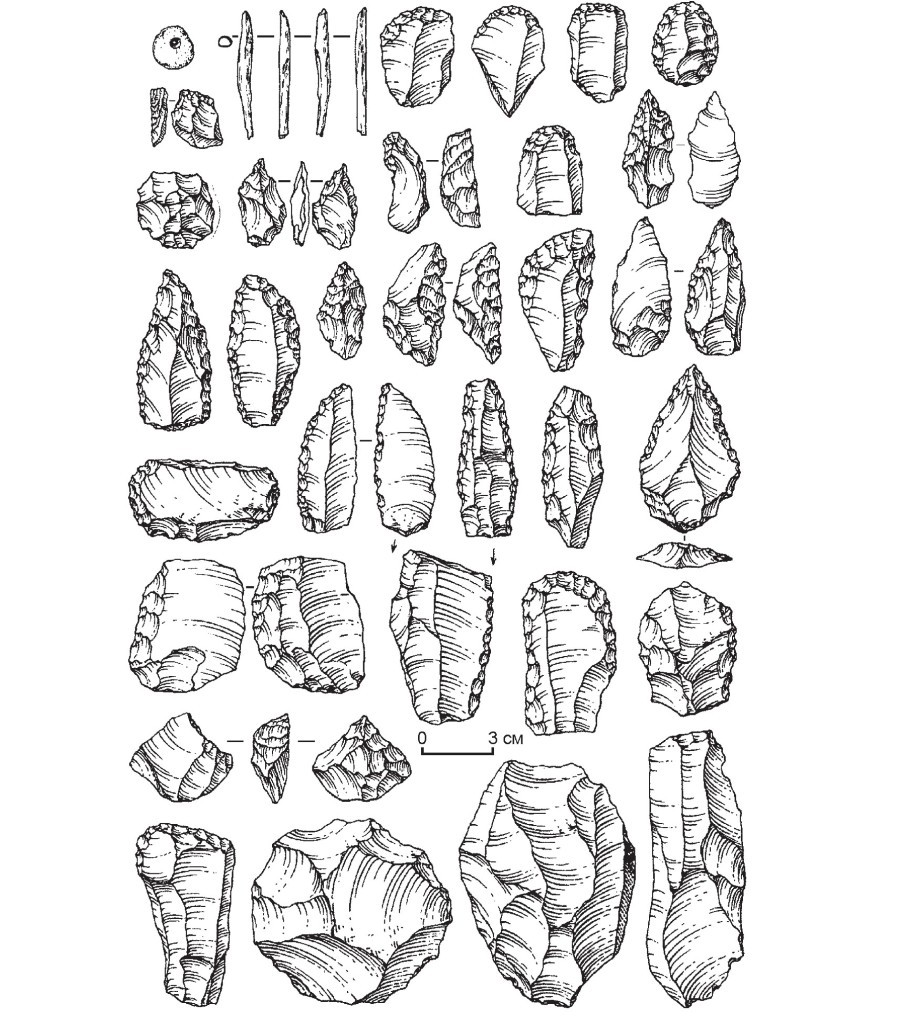Thus, in East and Southeast Asia the Middle to Upper Paleolithic transition differed from the African or Eurasian transition and represented a different scenario. This territory demonstrates both the in situ evolution of the Upper Paleolithic industries and the autochthonic origin of anatomically modern humans from local archaic varieties.
The largest amount of Homo erectus remains has so far been discovered in China and Indonesia. Certain variations notwithstanding, they constitute a rather homogeneous group. Among the important finds are the Yunxian crania, dated to 936 ka BP (Le Site…, 2008). Their considerable endocranial volume (1152 and 1123 cm3) as well as the presence of bifaces and cleaver-like chopping tools point to both an advanced physical type and culture. A key role in reconstructing the evolutionary paths of Homo erectus is played by the Zhoukoudian Locality 1 fossils, which comprise craniodental remains and postcrania of 44 individuals. Their morphology has been reconstructed in considerable detail. These hominids, which resemble their Javanese counterparts, were included in the Homo erectus species at the subspecies level – Homo erectus pekinensis. Layers 1–12 of Zhoukoudian were dated to 690–230 ka BP by various methods. Later finds, dated to the late Middle Pleistocene and Upper Pleistocene, include those from Hexiang in the Anhui Province, Chanyang and Yunxian in the Hubei Province, Maba (Guangdong Province), Dingcun and Dali (Shanxi Province), Salawusu, Liujiang and Laibin (Gansu Province), Ziyang (Sichuan Province), and Upper Grotto of Zhoukoudian.
 |
Fig. 22. Lithic tools from Shuidonggou, East Asia (after (Shuidonggou…, 2003)).
37
�����������������������������������������������������������������������������������������������������������������������������������������������������������������������������������������������������������������������������������������������������������������������������������������������������������������������������������������������������������������������������������������������������������������������������������������������������������������������������������������������������������������������������������������������������������������������������������������������������������������������������������������������������������������������������������������������������������������������������������������������������������������������������������������������������������������������������������������������������������������������������������������������������������������������������������������������������������������������������������������������������������������������������������������������������������������������������������������������������������������������������������������������������������������������������������������������������������������������������������������������������������������������������������������������������������������������������������������������������������������������������������������������������������������������������������������������������������������������������������������������������������������������������������������������������������������������������������������������������������������������������������������������������������������������������������������������������������������������������������������������������������������������������������������������������������������������������������������������������������������������������������������������������������������������������������������������������������������������������������������������������������������������������������������������������������������������������������������������������������������������������������������������������������������������������������������������������������������������������������������������������������������������������������������������������������������������������������������������������������������������������������������������������������������������������������������������������������������������������������������������������������������������������������������������������������������������������������������������������������������

